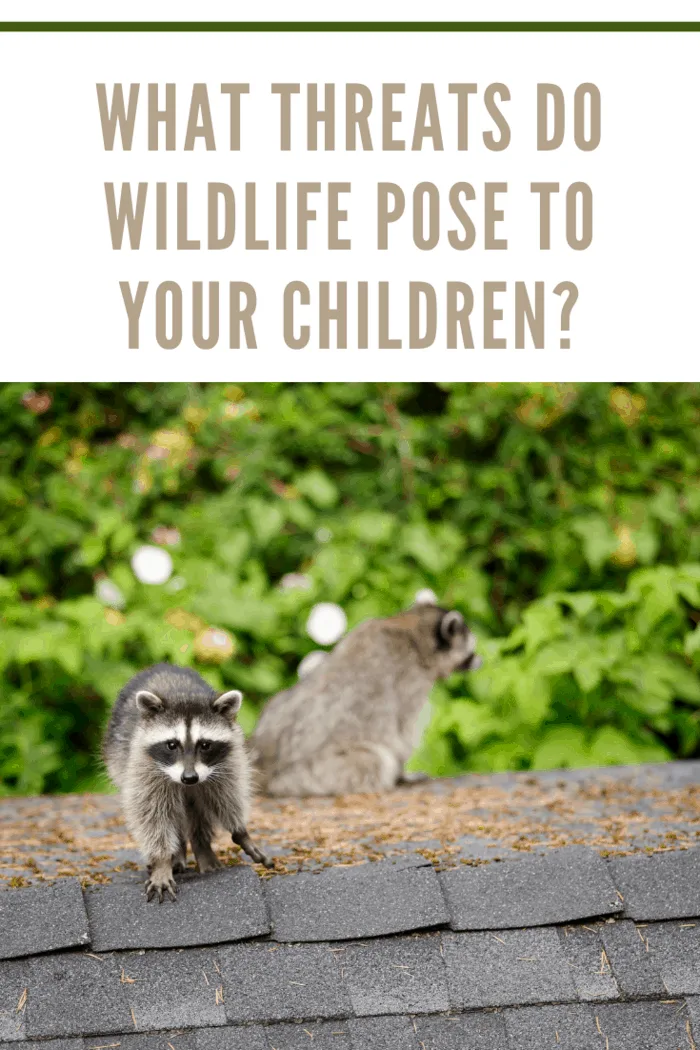Wildlife infesting homes in residential areas is increasingly becoming a common experience. The critters are moving into human environments because they are losing their natural habitats. Pests like rats infest properties especially during the colder periods, in search of food, water, and shelter.
Having wildlife on and around your property can be a source of worry, especially if you have children. In this article, we consider how wildlife poses threats to your children.

Spread of disease
Wildlife pests carry a lot of diseases.
The diseases the critters carry include those that they are natural hosts for.
They also carry parasites that attach to them.
The different wildlife pests carry diseases with severe consequences.
For example, bats and raccoons are carriers of rabies, amongst other diseases. (CDC)
They spread the diseases they carry through bites, scratches, and other interactions.
Children can contract any of the harmful diseases which wildlife carries.
This could be through contact with the live animals as well as their carcasses.
Children do not know the danger contact with wildlife pests, especially the docile ones, poses.
This makes them more prone to contracting the diseases the critters carry.
It is noteworthy that even the most typical household pests, like rats, carry diseases with serious consequences.
For pests like rats, the spread of diseases is not limited to direct contact.
Rats can spread diseases through their feces and urine, which they can produce on a wide range of surfaces.
That is why it is important to get rid of rats as soon as you realize their presence in your home.
This is a helpful source on rat control.
Wildlife can pose serious health threats to children because of their immune systems.
The immune system of young children is not fully developed.
Until they are five years old, kids’ immune system is mostly undeveloped.
Exposure to serious diseases before the full development of the immune system of kids could result in serious consequences.
Such infections could also be fatal.
The threat of the spread of harmful diseases is one of the top motivations for wildlife control and prevention.
It is also why a lot of emphasis is placed on disinfecting and cleaning surfaces after pests are eradicated.
Public health measures are also important for keeping children safe from the numerous diseases that wildlife critters carry.
Hand washing is especially important in this regard.
Attacks
Although many wildlife prefers to stay away from any form of human contact, some are bound to attack.
Aggressive wildlife attack children and adults and mainly puts children at risk.
A child could see a docile wild animal and assume that it is something they can play with.
The critter could easily attack the child in such a scenario.
The more aggressive a critter is, the higher its tendency to seriously injure a child.
The threat of physical attack on kids is especially notable for wildlife critters like snakes.
Children could encounter snakes in gardens, for example, and walk toward them without knowing the imminent danger.
Because of the threat of attack on children, the emphasis is placed on educating them on the dangers of different wildlife critters.
Also, measures to limit encounters with the critters are encouraged.
Such measures include making an environment unfriendly to the critters and preventing infestation.
Also, kids shouldn’t be left in suspected infested areas unsupervised.
We should mention that even the most docile animals can become aggressive when they feel threatened.
Harmless gestures by kids could come across to the critters as aggressive and cause them to react accordingly.
Wildlife threatens the safety and health of children.
Contact with the critters could mean serious health consequences for children.
The critters could also attack them.
